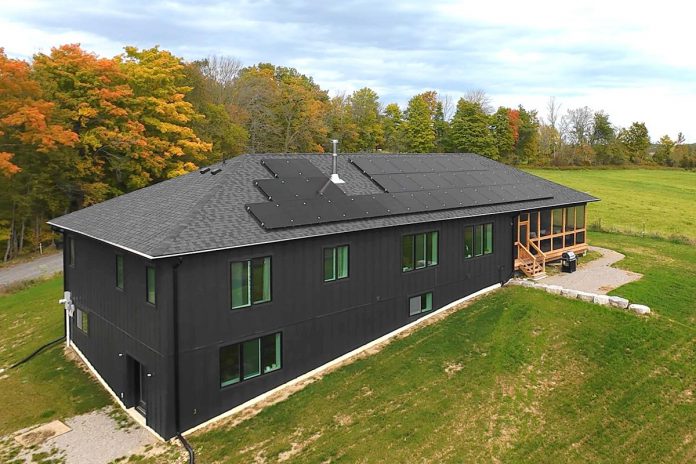
As our communities grow, new and custom-built homes of all shapes and sizes are increasingly in demand. Energy needs, however, are costly.
Residential, commercial, and industrial buildings account for close to 30 per cent of Canada’s carbon emissions, when including materials, construction, and use.
It comes as no surprise that the residential building sector is seeking ways to improve energy efficiency, reduce waste, build more sustainably, and lower emissions.
The Peterborough & the Kawarthas Home Builders’ Association (PKHBA) is working to support its members — professionals in residential construction — with strategies that both build vibrant communities and long-term sustainability in the residential construction sector in the Kawarthas region.
Recently, PKHBA and the Canadian Home Builders’ Association hosted a full-day workshop for local construction professionals on an innovative and comprehensive strategy called the integrated design process (IDP).
With the guidance of educator Troy Tilbury of Building Knowledge Canada Inc., builders from the City of Peterborough, Peterborough County, and the City of Kawartha Lakes learned how to build homes with improved performance that reduce owner energy costs and lower construction waste.
The IDP gathers professionals involved in various stages of the building process to collaborate on the construction of a building from the beginning of the design development. Meeting regularly, these experts — which could include the owner, architect or designer, electrical and structural engineers, energy advisors, mechanical/HVAC specialists, and others — work together on overlapping areas of expertise to uncover opportunities to improve building performance.

In the IDP process, practitioners are encouraged to explore certain strategies. These strategies, listed below, can be considered by anyone building or retrofitting a building.
Optimizing the building envelope
Materials that enclose a home (insulation, roofs, and doors, for example) should be chosen for thermal performance that reduces the need for heating and cooling.
Windows and doors can be placed to take advantage of the sun’s warmth to reduce heating needs by up to five per cent.
Designing home systems to integrate effectively
Insulation can be installed, and airtightness can be adjusted so that they complement the heating system to minimize energy waste.
The right-sized heat pump can be an excellent way to reduce energy consumption, while a dual-core hot water heater with a backup tank has the potential to create enough heat to power a home’s radiant in-floor heating and heat a hot tub.
Ensuring good air quality and ventilation
A key takeaway for PKHBA members at the IDP workshop was that houses can never be too airtight, only under-ventilated.
A coordinated ventilation system ensures that fresh air is introduced efficiently to a building without losing too much heat or cooled air. Understanding how to use a home’s Heat Recovery Ventilator (ERV/HRV) is a part of this, and essential for maintaining comfort and maximizing the efficiency of an HVAC system.
Choosing and using materials efficiently
Through the IDP process, participants are encouraged to collaborate on material selection that meets both energy-efficiency and sustainability needs. This can include using advanced framing techniques, insulation with high thermal resistance, and reflective roofing. The carbon impact of manufacturing a building material can also be considered during selection.
Local not-for-profit organization Builders for Climate Action hosts an online tool called the Building Emissions Accounting for Materials (BEAM) Estimator that provides the carbon footprint of various construction materials, while Natural Resources Canada offers an online Material Carbon Emissions Estimator.
Embedding sustainability strategies identified through consultation and collaboration into the design and construction of a building reaps long-lasting rewards for both builder and owner.
Working with professionals early in the planning process keeps project goals achievable and attainable during construction.
Ultimately, a home is much more than the biggest financial investment one can make — it’s a place where families grow, memories are made, and futures are built.
Rebecca Schillemat is the executive officer for the Peterborough & The Kawarthas Home Builders Association (PKHBA). PKHBA would like to thank and give credit to the Canadian Home Builders’ Association, Troy Tilbury of Building Knowledge, and Natural Resources Canada for data and information in this article. For more information about PKHBA, visit www.pkhba.com.


























